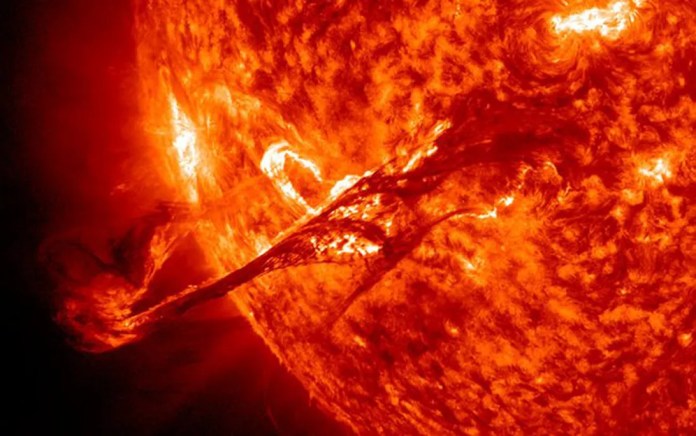
NASA observed an explosion that occurred more than 90,000,000 miles away from their home on Jan. 20.
On Thursday, the massive glowing ball of plasma that is the heart of the solar system (aka The sun), released a solar flare. NASA’s solar-observing Solar Dynamics Observatory captured this moment. Now, two GIFs have been released — technically one is just a zoomed-in version of the main one — to highlight the energy-packed burst.
The full image is available here. The solar flare can be seen even zoomed in. You can see the solar flare on the right side of this image.
NASA describes this as a “midlevel” flare. It has an M5.5 classification, which indicates the impact of the space weather event on Earth. Solar flares such as this can essentially be described as a huge release of electromagnetic radiation. The radiation that is released from an outburst spreads at the speed of light, spreading across our solar system. If it is strong enough, this burst can influence radio waves, electronics, and other Earth-based technology (specific impacts will depend on how much and what type of energy is released).
This solar flare event is at the second-lowest level in the National Oceanic and Atmospheric Administration (NOAA’s) “space weather scale”. The M5 classification is a “moderate” radio blackout event that can black out radio communications for tens or even hundreds of minutes on Earth’s sunlit side. It can also interfere with low-frequency navigational signals (that’s not your average smartphone GPS or most modern navigational tech), for a similar time.
It doesn’t matter if you don’t know much about the science behind these images. You can still see an energy explosion in the distant sun. Spaceweather.gov is an excellent place to start if you want to know more.



